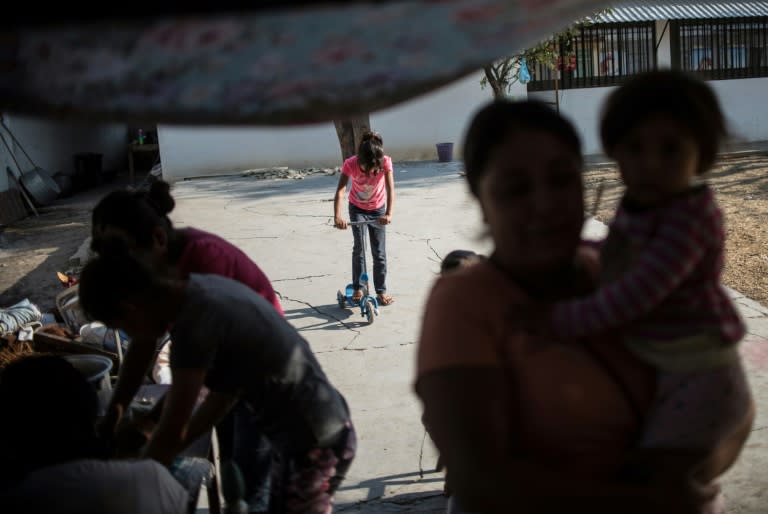'We left everything': stories of Mexicans uprooted by violence
After 88 years living in San Felipe, in the mountains of southern Mexico, Maria Guadalupe Castro fled the only home she had ever known, along with the rest of the village's residents. The mass exodus came after gunmen from the Familia Michoacana drug cartel repeatedly attacked the small village in Guerrero, one of the most violent states in Mexico. First, 10 gunmen kidnapped a local government employee, on January 4. He has not been heard from since. The next day, they came back and opened fire on the village. A group of local men armed with hunting rifles managed to fight them off. But four people were left wounded. San Felipe's 450 residents fled in fear, bringing whatever they could in pick-up trucks. "We left everything behind," said Castro, crying as she told her story at the shelter where she and her neighbors are now staying in the city of Apaxtla de Castrejon, two hours from San Felipe on the rugged mountain region's winding roads. "We put our hens in the pen.... We left behind our pigs. We didn't bring anything. Just a little corn," said the slight octogenarian. According to the government's National Commission for Human Rights, the residents of San Felipe are among 35,000 people displaced by violence in Mexico -- forced to flee their homes by a wave of bloodshed linked to organized crime. Such stories often start with cartel gunmen arriving in a village and ordering residents to start farming opium poppies, the raw ingredient for heroin, threatening to burn people alive or torch their houses if they refuse. Criminal gangs have also been known to force villagers to work on illegal logging operations. In regions like Tierra Caliente -- the lawless stretch of remote mountain terrain where San Felipe sits -- villagers have little choice: accept a sort of modern-day slavery, or flee. - Ghost towns - Residents of San Felipe say that in their case, the Familia Michoacana wanted to forcibly recruit village children. In Apaxtla de Castrejon, where residents have formed a "community police force" to do the job the real police have largely given up on, one such vigilante said the cartel's gunmen were already well-known in San Felipe. "They had hideouts there. Whenever they came the villagers had to serve them food, whether they wanted to or not," he told AFP. Community police said they believed the attacks on San Felipe were about the Familia Michoacana marking its turf, in a state where more than 20 drug cartels and criminal gangs vie for territory. Their battles have left Guerrero soaked in blood. The state registered 2,318 murders last year -- the most violent state in a year that set a record for violence in Mexico, with 25,339 murders nationwide. Across Mexico, more than 200,000 people have been killed in a wave of bloodshed since the government deployed the army to fight drug cartels in 2006. - Long wait - Time seems to stand still at the state-run shelter where the 40 families of San Felipe now live. Villagers are trying to move on. They have started sending their children to school here, and the men occasionally find temporary work on construction sites or farms. Others pass the time waiting. "We wish they (the government) would support us, give us a piece of land to live on," said one middle-aged man who asked his name not be used for fear of reprisals. The food they were able to bring with them is slowly dwindling. Many villagers say they think often of their abandoned crops and animals. They assume they are dead now, since water is hard to find in the village. But no one has been back -- they are all too afraid. "We're all sad, we're all in pain. But also afraid," said Isabel Castillo, 63, a corn and bean farmer. But he would rather be here than run the risk that one of his sons could be forced into the Familia Michoacana, he said, as women made corn tortillas on the shelter's rustic griddle. "We left to get away from all that, so our children don't end up running around with AK-47s too."



